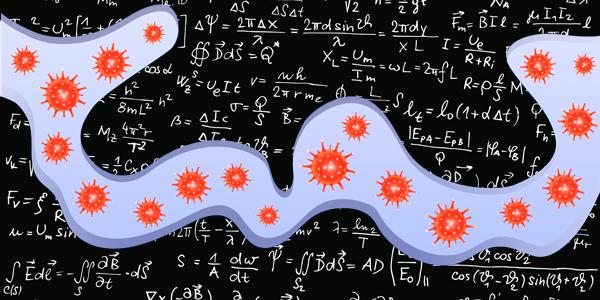
The other day started with the question that can send a pang through a parent’s heart: “Mom, can you help me with my math?” Gulp. Grade 11 Algebra – double gulp! First question:
Write this function in vertex form f(x)=2x3+3x+1.
Small whimper. Internal self-talk: “I don’t even know where to start! Don’t panic. Pull yourself together. You can do this. Take it step by step. Okay, fine!”
The questions all seemed so abstract. Really, the big question we all want the answer to is, “When will all of this COVID-19 stuff end?” The answer: We can expect life to return to near normal in X months. Unfortunately, no one has solved for X yet. There are too many variables and we can’t flip to the back of the book for the quick answer. We’re writing it as we go along.
Before attempting any answer, it’s important to fully understand the problem. This is tricky because the virus is so new and we are still trying to figure it out. Scientists all over the world are working furiously to analyze this disease from every angle. As new credible evidence emerges, public health advice is re-examined. This is why you may see things change as time goes on.
As with any math question, it’s helpful to use formulas that have been successful in the past. The pandemic textbook (I’m sure there is one!) would say to focus efforts on starving the virus from a host. Hence the infection control measures and why it was necessary to take the huge step of shutting down non-essential spaces in the first place. With everyone’s cooperation, we “flattened the curve.” The numbers showed it. It wasn’t easy, but we did it.
Now, we’re on to the next step. This is where the big test comes in. How well can we do at keeping case numbers low when some restrictions are lifted? It is so critical that we get this right. If we don’t, we may as well get out a big eraser and go back to the start. Not only would that put lives at risk, but going backwards would certainly deflate our collective spirit. We’re all just so eager to move forward!
Each one of us is part of this equation. Here are some important things to keep in mind as we work through this stage:
- Be diligent! The carefree days of summer are on the horizon but it’s still important to do everything possible to protect yourself, your family and your community.
- Stay home if you’re not feeling well. Do not go to work or out in public. Even if you have only one mild symptom, call TBDHU and speak to one of our friendly staff.
- Frequently wash your hands with soap and water or use hand sanitizer, especially after touching things like public keypads, door handles, light switches, etc. Don’t bother wearing gloves in public. They often give a false sense of security and you could end up spreading more germs than if you’d just washed your hands instead.
- Avoid touching your face with unclean hands.
- Disinfect highly touched surfaces regularly. Don’t forget electronics and remote controls too.
- Cover any coughs or sneezes with a sleeve or tissue, and again practice good hand hygiene.
- Maintain a physical distance of 2 metres from others outside of your household. If you can’t, wear a mask or face covering to protect others. Just make sure to wear it right. Pulling it down so you can breathe better essentially voids the point of wearing one. Visit our website for helpful tips on wearing a face covering.
- Get tested. Even those without symptoms can carry this disease and spread it around without even realizing. At this time, anyone can get tested and the results are very helpful in providing the information needed to track this disease in our local area.
The better we are at doing these things, the sooner we can get to the next step. It will take hard work and patience though. We are told that at least two weeks or more have to pass before knowing if we can move on. During that time, I know we’ll all be paying close attention to the numbers. Case counts, transmission rates, and other figures will tell the story of how well Ontarians are complying to public health advice.
We don’t have to be clever mathematicians to figure this out. We just have to be smart. Dr. Tam at the Public Health Agency of Canada is encouraging us all to “Go out smart!” This means keeping up with the tried and true methods of keeping COVID-19 numbers down.
It turns out that the answer to the Grade 11 math question above was f(x)=2(x+3/4)2-1/8. It took several tries. Each time we had to go back and try to figure out what went wrong. I had to remember some basic principles that interestingly enough can also apply to our current dilemma:
- Look for the common denominator - we’re all in this together;
- Simplify the terms - follow infection control measures; and
- Remember that two negatives can equal a positive - it’s uplifting to see how people are supporting each other to get through this.
Truth be told, when we finally got the right answer, I did a little victory dance in the kitchen. In X months, I know we’ll all be ready to celebrate. The number that X represents depends on each one of us and our own calculated movements. Let’s do this right!


